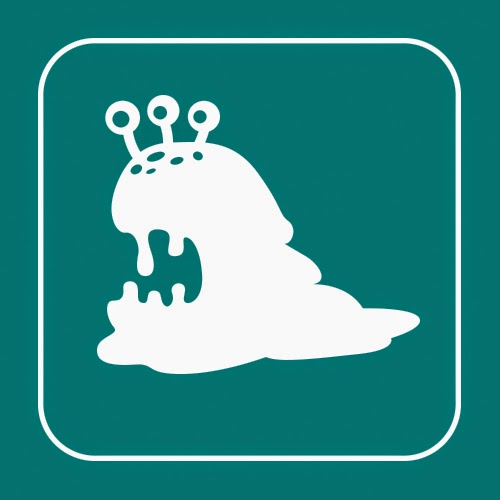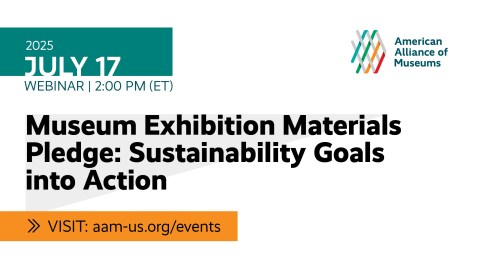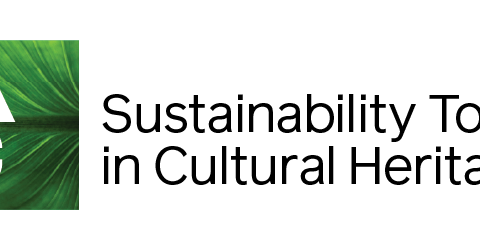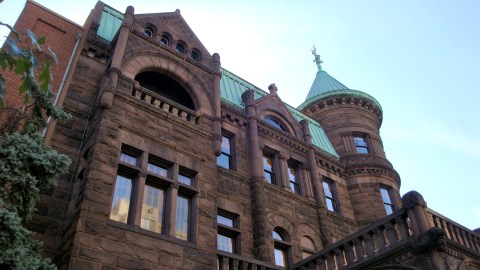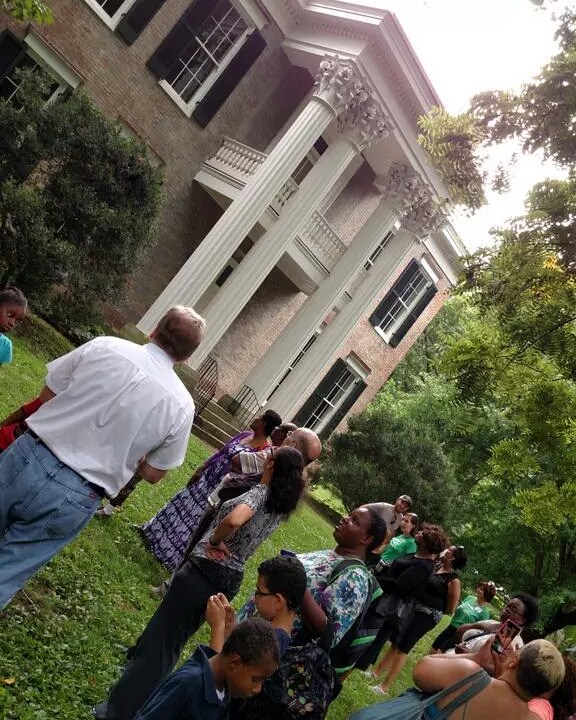
This week we followed up with LaneyTillner to learn more about her work with the John Early Museum Magnet Middle Prep–a museum school where she volunteers as a consultant. Laney is a graduate student in Public History (with aconcentration in Museum Studies) at Middle Tennessee State University,and she’s writing her thesis about museum schools. Youcan follow her on Twitter @OliviaLane87.
Like other museum schools, John Early integrates the museum process into their instruction. Students routinely participate in Learning Expeditions, or curriculum based lessons that focus on instruction beyond the boundaries of traditional classroom settings. Every nine weeks, students have a school-wide Exhibit Night in order to share their knowledge of museum standards.
Perhaps one of their most innovative methods of community engagement is the work they do with their pathway school, Robert Churchwell Elementary (also MSAP grant funded). Each month, students from both schools participate in Family Expeditions. These visits allow for in-depth and meaningful experiences between students, their families, and staff at partner museums.
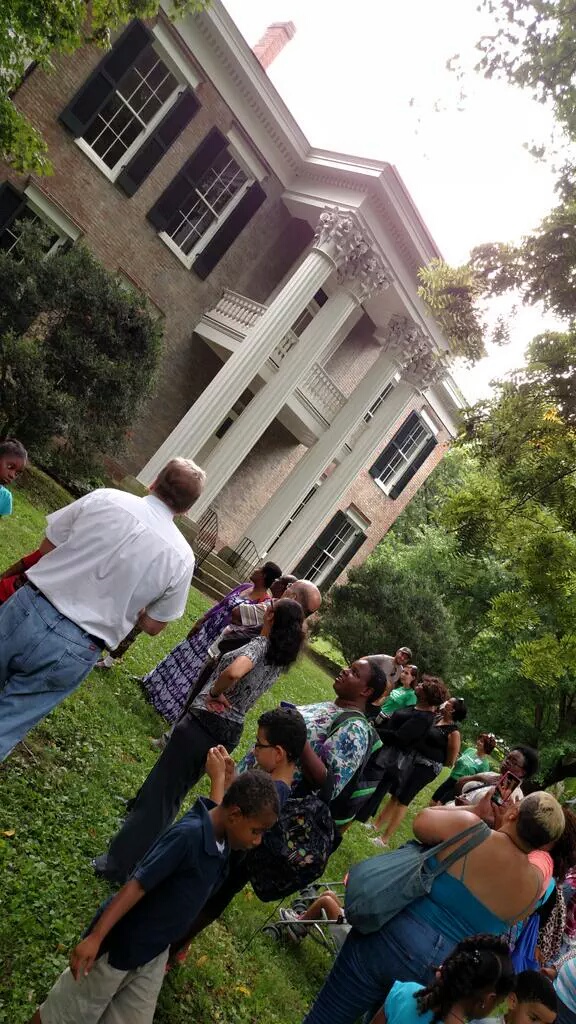 |
|
Family Expedition to Glen Leven Farm, August 2015 Credit: Becky Verner
|
Project-based learning (PBL) is an important aspect of the John Early experience, particularly when students work directly with museum partners. Some even complete internships with these institutions, including the Tennessee State Museum, the Parthenon, and Belle Meade Plantation. Students also regularly work on projects with their peers beyond the John Early campus. For example, in the 2014-2015 school academic year, 7th grade students worked with a team of archaeologists at the “Unknown 20” site—an unmarked cemetery which recently was identified as a slave burial site on the property of the Nashville Zoo and the historic Croft House. The students performed DNA analysis, primary source research, gave presentations to Croft House employees based on their findings, and created programming based on their research. They presented their work via a student-written and directed event.
 |
| Student Internship Presentations at the Tennessee State Museum, July 2015, Credit: Becky Verner |
Beyond the partnership with the Nashville Zoo and historic Croft House, two self-contained 6th grade classes are currently completing the “Museum Matters” PBL, which consists of them developing floor plans to best utilize museum storage space. They will create proposals and presentations for a panel comprised of the principals, teachers, and available representatives of the Tennessee State Museum, Middle Tennessee State University, and Glen Leven Farm among others.
John Early Museum Magnet Middle Prep is unique in comparison to other museum schools because it also is creating its own museum . The museum will be a place of instruction for the students and a place of cultural engagement for the surrounding community. A chance meeting led to the school’s acquisition of a collection from Scarritt College, a school for Methodist missionaries that moved to Nashville in 1924 and ceased holding classes in 1988. As missionaries returned from their missions Scarritt College came to accumulate various cultural artifacts representing the nations they visited. The collection was recently deaccessioned by the Hartzler-Towner Multicultural Museum at the Scarritt Bennett Center and gifted to the John Early.
 |
|
Exhibit Cases Installed into Museum Space, July 2015 Credit: Lane Tillner
|
John Early’s museum collection also includes items originally from the Children’s Museum of Nashville, which initially became the Cumberland Science Museum, and later the Adventure Science Center (at which point it transferred its collection to Scarritt Bennett). This cultural collection, of nearly 5000 artifacts, represents numerous African, Asian, South American, and Europe nations. Following the acquisition of the collection, Metropolitan Nashville Public Schools approved a museum addition to the existing school building. Completed in July 2015, the first major exhibit is underway and a grand opening is planned for later in October.
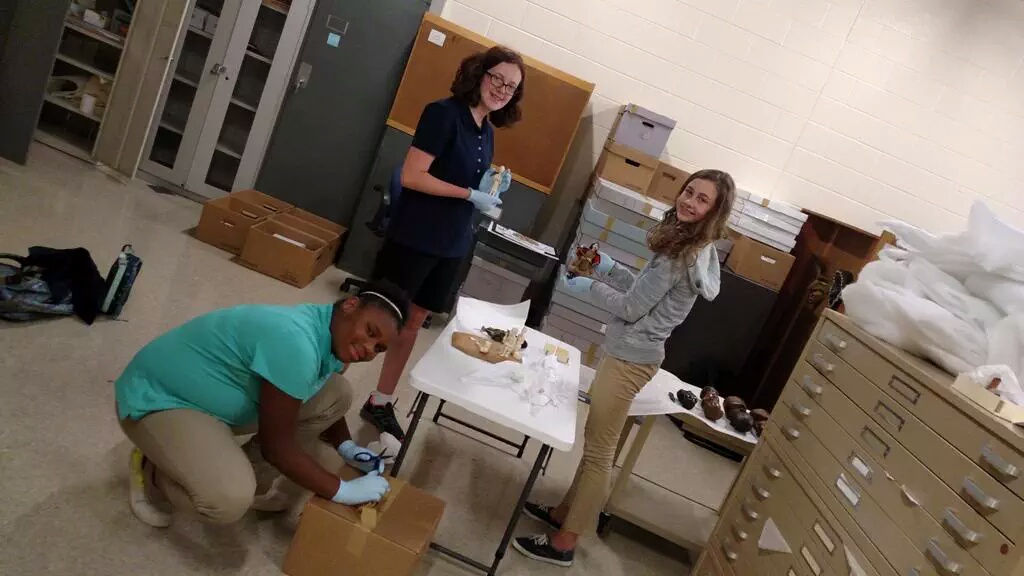 |
| Junior Curators Work with Collection, August 2015 Credit: Becky Verner |
Since the completion of the museum addition, I have been working in the museum to help prepare for the grand opening. Many of the students have been allowed to spend short periods of time throughout the day helping me unpack artifacts, develop an inventory, and curate the opening exhibit. The preparation process usually slows when students help, but working with them is an intangible experience. They regularly stop to examine an artifact they find interesting and debate what it is and how it might have been used. I think that level of engagement is absolutely worth any delay. Frankly, the best part is seeing their excitement when they ask how soon they can return to help. Museum schools create truly significant and unique learning experiences for students and will continue to do so. If you read my post last week, you will recall that a broad range of institutions call themselves museum schools so it remains rather difficult to define them. But, all that I have come across reflect an interest in moving beyond traditional models of classroom instruction, advocating for multiple pathways to learning, and creating community engagement projects. This trend within then field of education and museums, I believe will only result in a richer classroom experience for students, teachers, and their communities.
